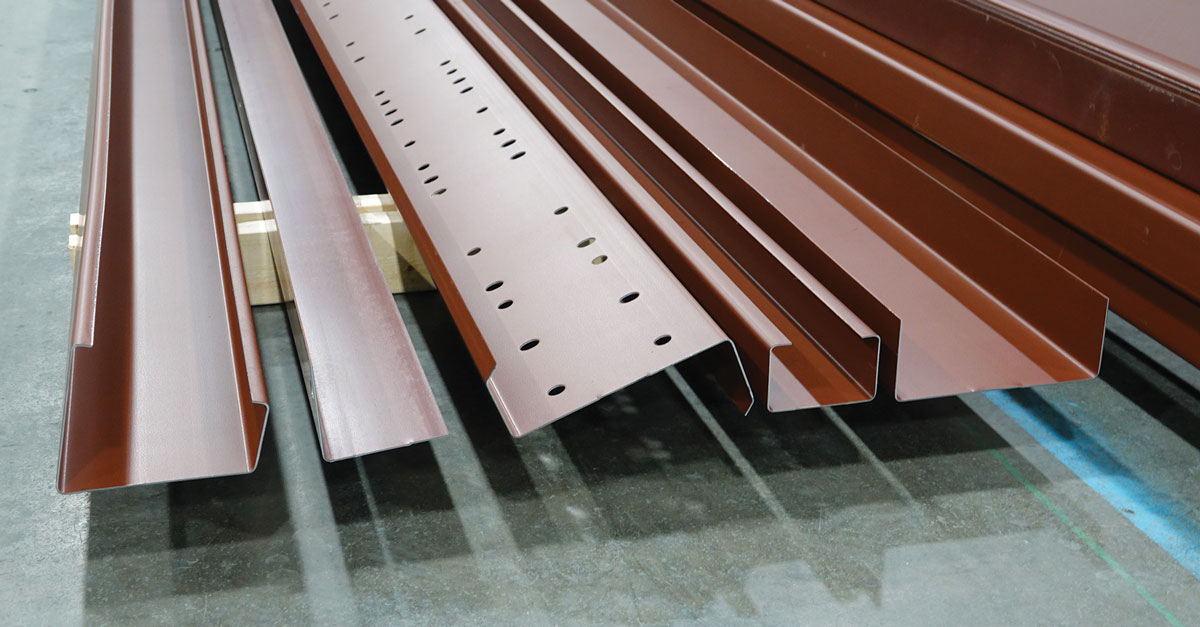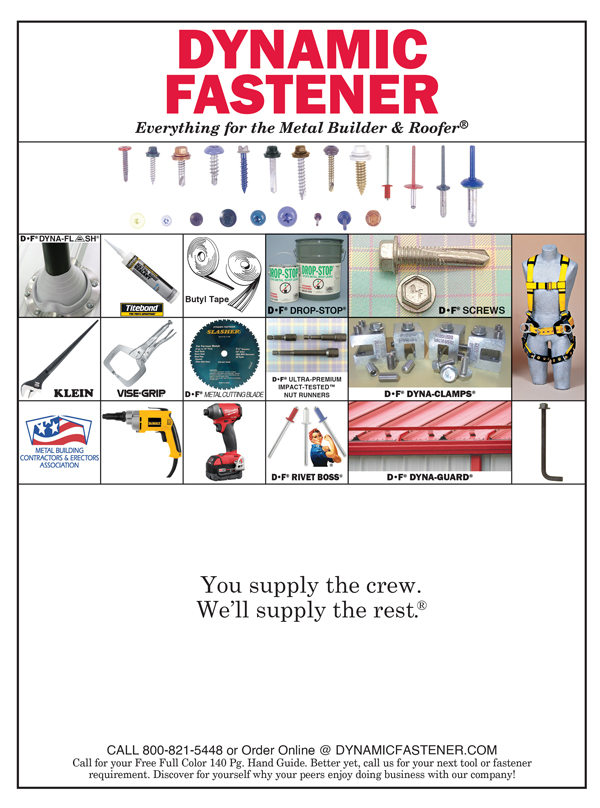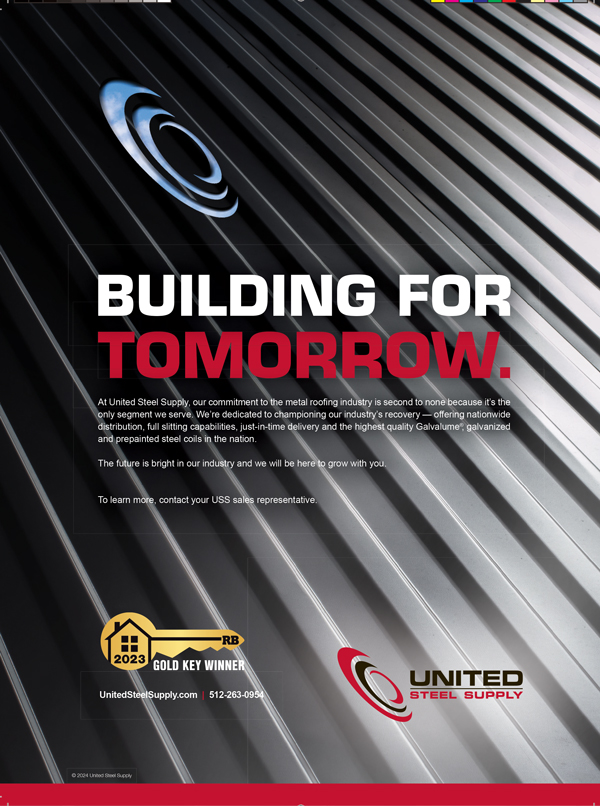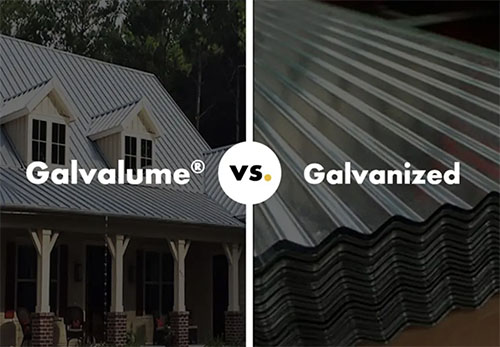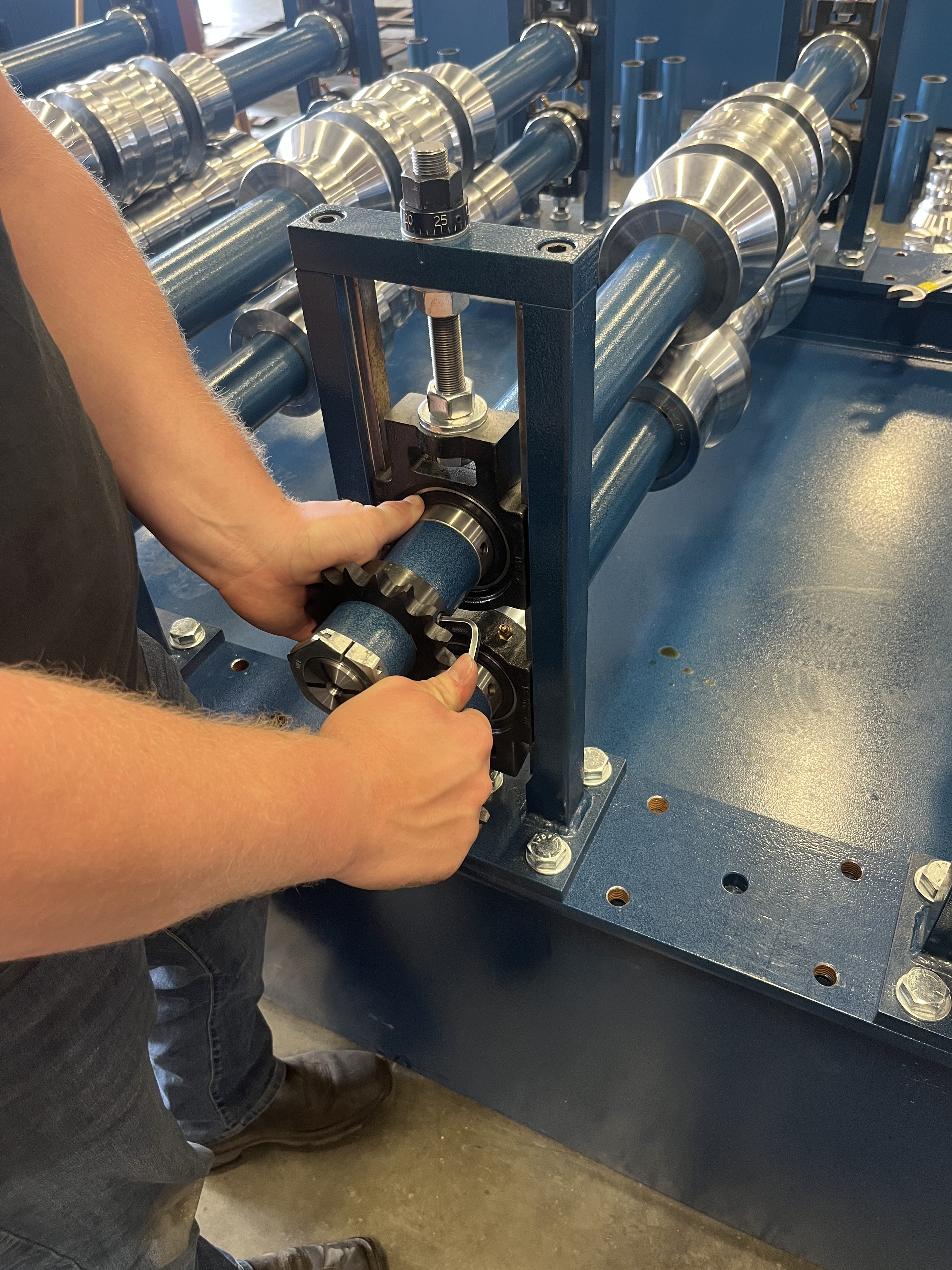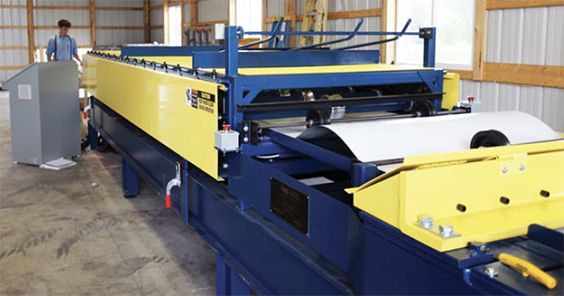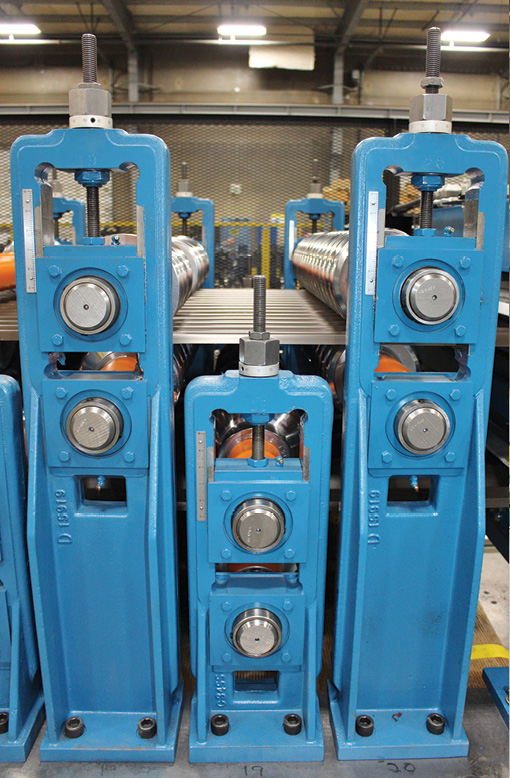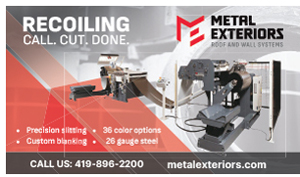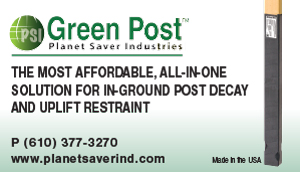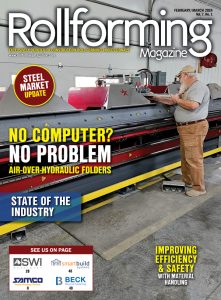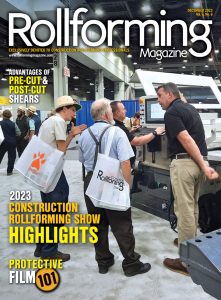By Karen Knapstein
Roll-formed structural steel components are designed to provide structural support and stability in building construction. Also known as cold-formed steel (CFS) or light gauge steel (LGS), the use of steel for structural framing is increasing, creating opportunities for metal-forming shops.
Growing Popularity
CFS framing offers excellent resistance to fire, mold, termites, and other environmental hazards, enhancing the resilience and durability of the constructed buildings.
Also among the reasons why it’s becoming more widely used: Builders are discovering standardized components make fabrication easier and quicker. CFS framing systems can be prefabricated off-site or assembled on-site, resulting in faster construction times compared to traditional methods. And the lightweight nature of CFS makes for easier handling and installation. It can also be easily customized to accommodate many architectural styles, building configurations, and design requirements.
Equipment
To reap the benefits of supplying structural components to the construction industry, manufacturers must produce components to tight tolerances and precise specs, with consistent dimensions and quality. The roll forming machines that are used for forming the channels, angles, purlins, and other structural components must be capable of producing consistent and precise shapes and dimensions.
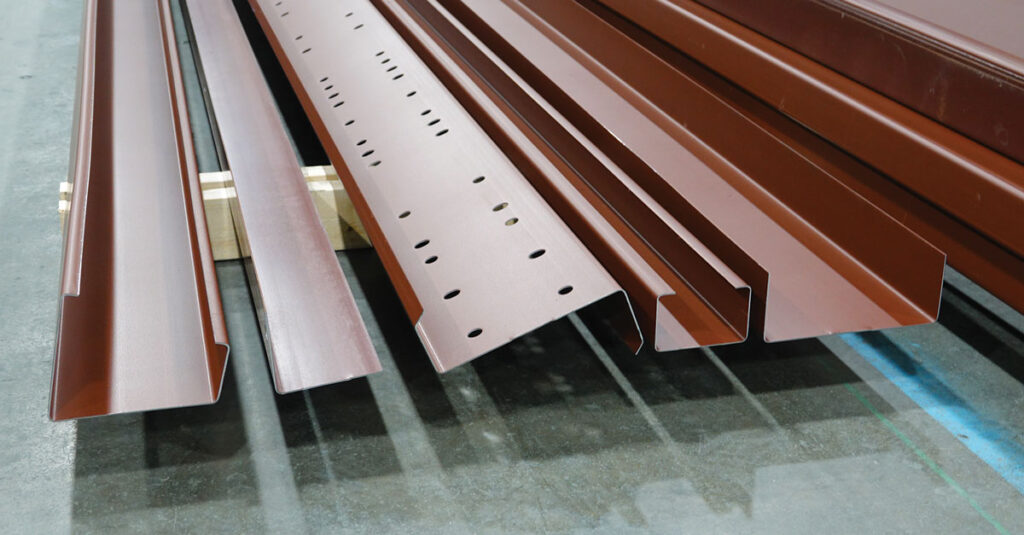
In order to produce a wide range of purlin shapes, component manufacturers need a versatile purlin roll forming line.
Photo courtesy of ASC Machine Tools.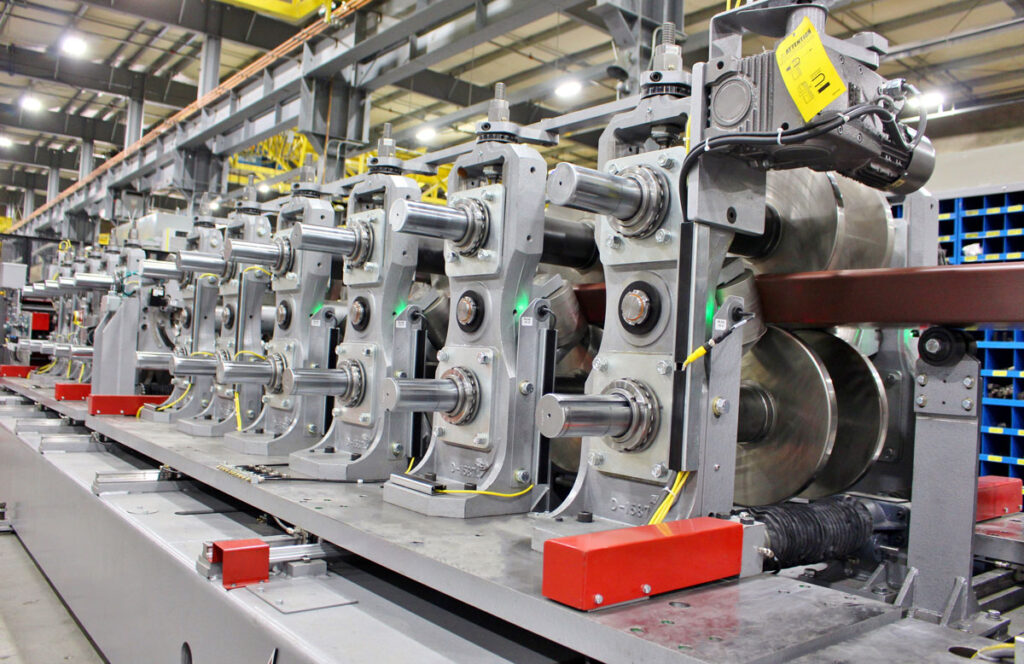
Photo courtesy of ASC Machine Tools.
Equipment manufacturers are well versed in what metal forming shops need to make these components. Howick Ltd, a New Zealand-based company with a presence in the United States that manufactures steel framing machines for construction applications, advises that component makers first learn about what machines can and cannot do. “When designing structural components for a structure you need to understand first what the roll forming machine can offer in automation of digital fabrication regarding profile size or sizes, and gauges of steel it can produce,” advises Thomas Reed, Regional Manager at Howick. “This is very important if you can be on the front end of a design effort to work within those parameters. This is different from simply designing to typical Stud and Track that can be purchased in a variety of profiles and gauges in the retail market. The automated roll forming machines such as Howick offer the ability to allow the machine to produce all the components to panelize for walls, open web floor trusses, and roof trusses inline or in the strong axis.”
CFS Framing
CFS framing systems are engineered to meet or exceed building code requirements for structural integrity, fire resistance, and other considerations. Reed explains, “It is important to have design and engineering services that can do dynamic engineering for a structure. The objective is to optimize the structural design to optimize weight of steel in a structure, and still meeting all the necessary structural design requirements.”
CFS has a high strength-to-weight ratio, making it suitable for constructing lightweight yet durable structures. If formed properly from the right materials, framing members can withstand significant loads and are resistant to buckling and deformation.
Purlins are used in structures that have a variety of framing systems. “Purlins are used on low-rise and high-rise structures to span long distances, because they are incredibly strong and durable and are able to support heavy loads,” explains ASC Machine Tools’ Thomas Schwarzer. “The most common purlin shapes are C and Z profiles produced in different sizes and gauges. Purlins are typically made out of galvanized or red oxide painted steel and offer a wide range of benefits over other structural systems.” A galvanized finish is usually more expensive and offers the best protection from rust. “The red oxide finish is cheaper and offers some protection but when exposed to weather the purlin could eventually start to rust.” The advantage of red oxide is that it can be painted after the install to add a custom touch to the steel building.
In order to produce a wide range of purlin shapes, component manufacturers need a versatile purlin roll forming line. And to make the most of employee time and maximize production/output, it’s important that the equipment has features that support efficient changeover.
A Versatile Roll-Forming Line
Schwarzer gives an example of a versatile roll forming line: “The TKR-X Purlin Rollforming Line is unmatched when it comes to versatility and efficiency in purlin production. It was designed to meet the diverse needs of manufacturers and produces a comprehensive range of purlin shapes including C and Z purlins, channels, eave struts, and angles, with web widths ranging from 3” to a maximum of 16” or 24”.
The heart of this particular line lies in its punching unit, which is engineered for optimal performance and flexibility. “Combining C-Frames and 4-Post die sets, our punching unit guarantees the highest levels of precision, enabling seamless production and consistent quality across all profiles,” he says.
Automated or Manual
ASC Machine Tools has two options for profile changeovers: fully automated or manual. The fully automated changeover system can complete transitions between profiles in less than 2 minutes, ensuring minimal downtime and maximum productivity. The manual changeover option provides flexibility tailored to the owner’s needs, with transition times ranging from 5 to 30 minutes depending on profile shapes and material thickness.
Automation can be an important factor in ensuring consistency in dimensions and quality. Even if production is automated, operators must do their part to assure components turn out as they should. Proper maintenance and alignment of tooling are important for achieving accurate and consistent profiles. Rollformers should regularly inspect and maintain tooling to prevent wear and ensure the machine’s best performance. Adjusting the roller pressure, gap, line speed, and material feed rate are also important in maintaining the desired shape and dimensions while minimizing material defects.
Conclusion
As the construction industry continues to prioritize efficiency, performance, and sustainability, the use of CFS is expected to further grow in the coming years. By implementing best practices and making well-informed choices about equipment, rollformers can optimize their processes, maintain necessary product quality, and maximize profitability when producing structural components. RF


